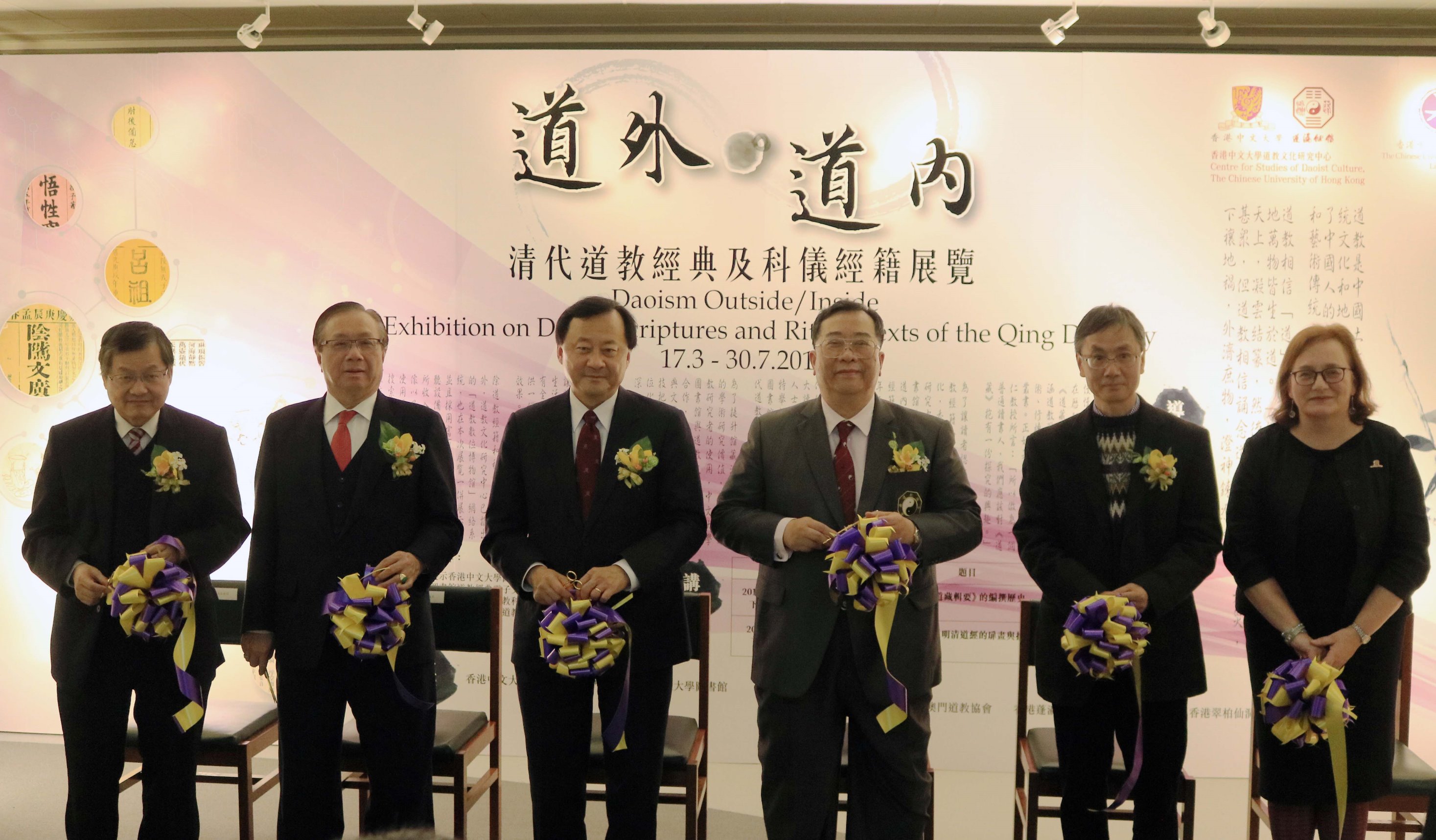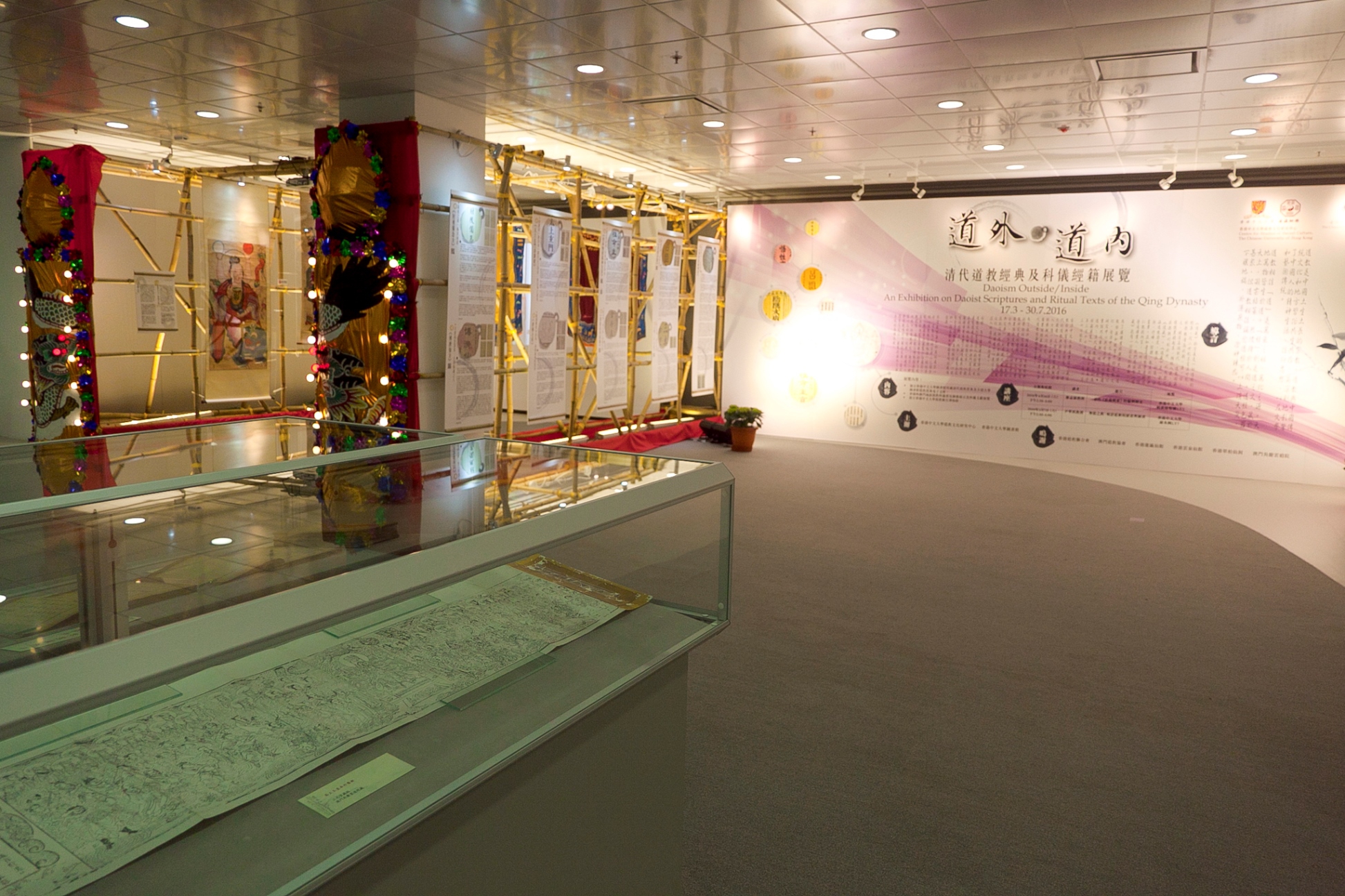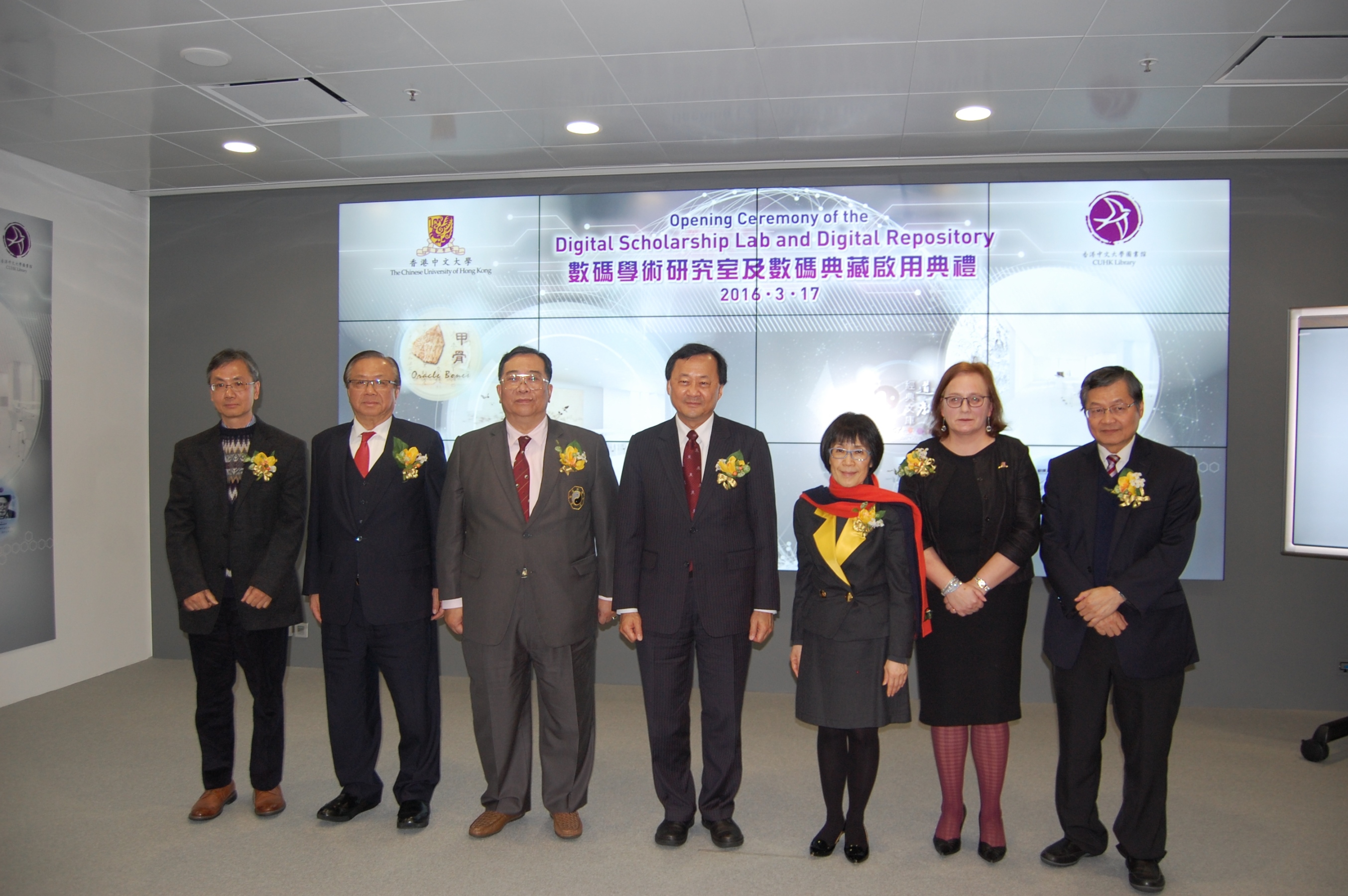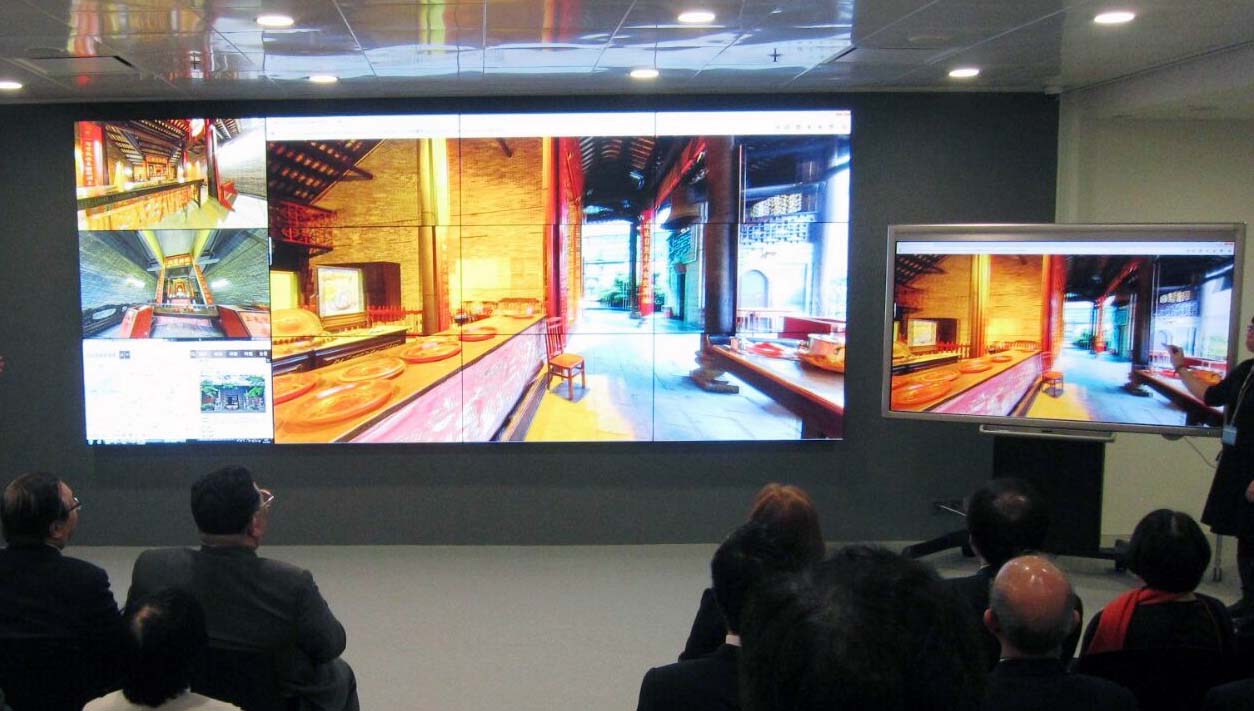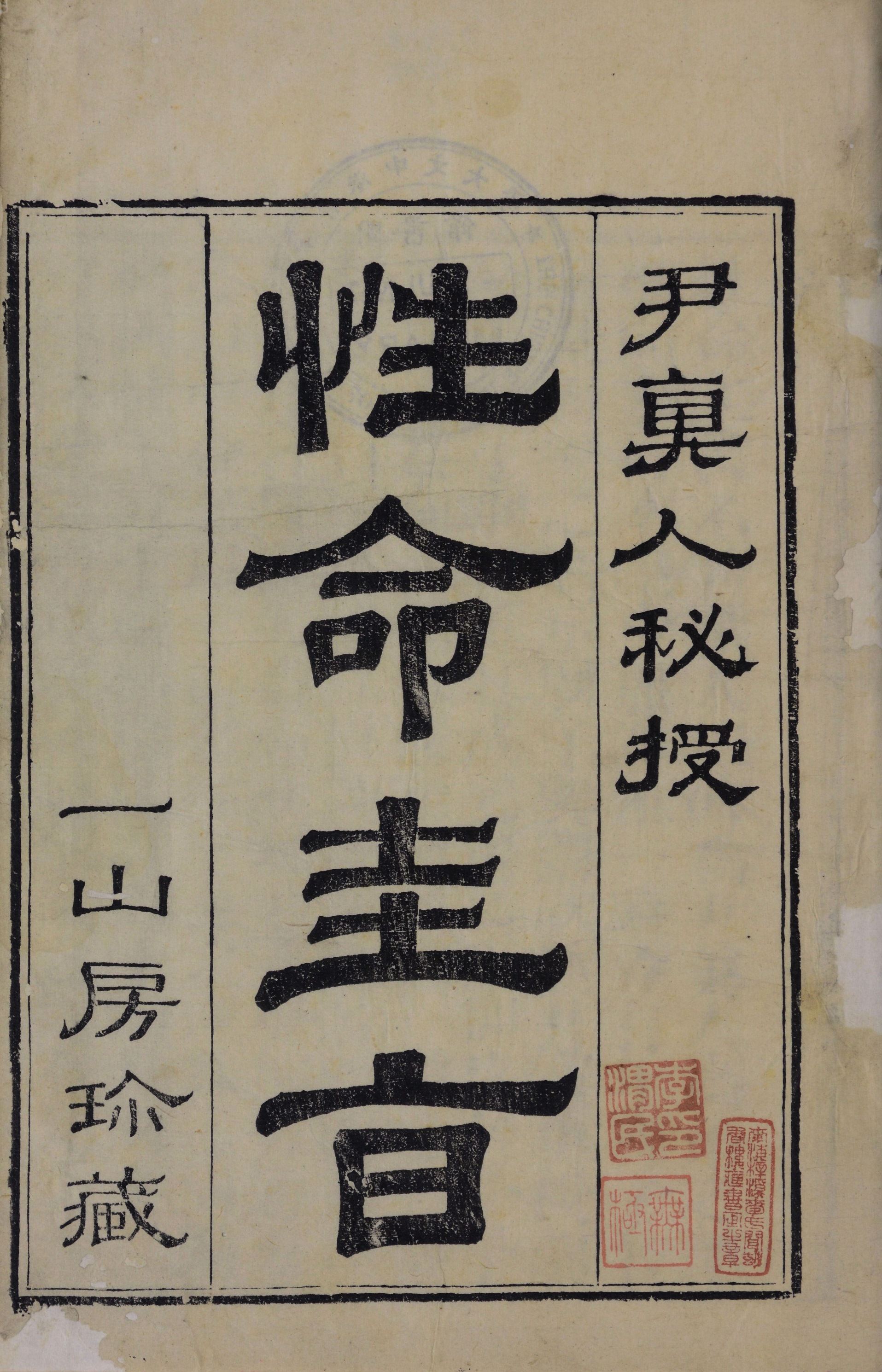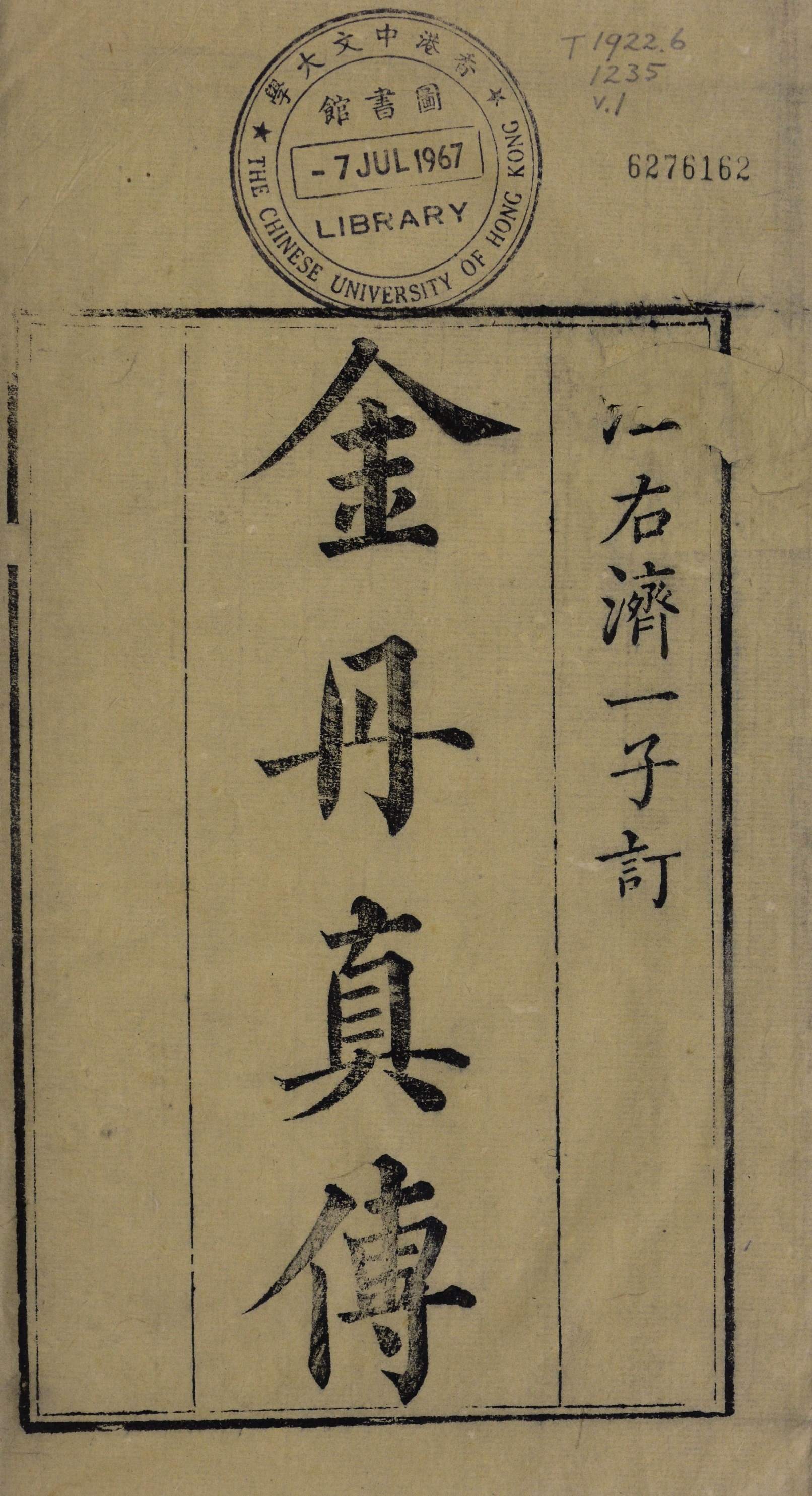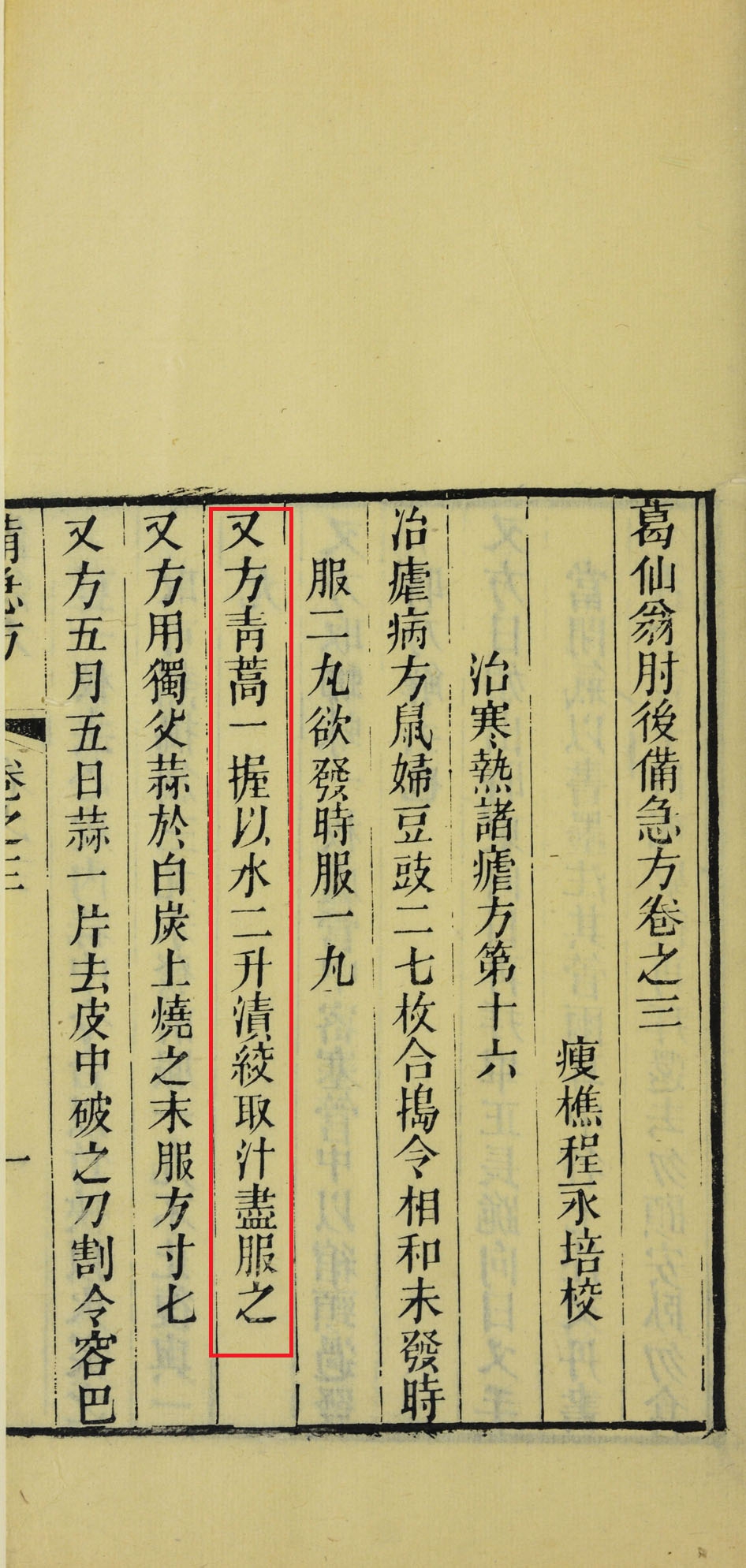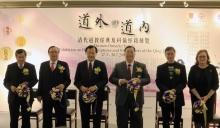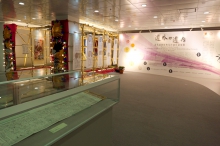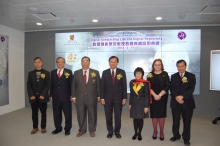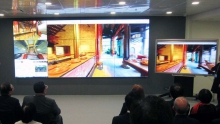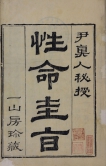CUHK
News Centre
CUHK Holds the Opening Ceremony of ‘Daoism Outside / Inside: An Exhibition on Daoist Scriptures and Ritual Texts of the Qing Dynasty’ and The Digital Scholarship Lab
The Centre for Studies of Daoist Culture of The Chinese University of Hong Kong (CUHK) and the University Library recently held the opening ceremony of ‘Daoism Outside / Inside: An Exhibition on Daoist Scriptures and Ritual Texts of the Qing Dynasty’ and of its new Digital Scholarship Lab. At the ceremony, the Library also officially launched its Daoist Texts Collection and the CUHK Digital Repository.
Officiating guests included Master Leung Tak Wah, Chairman of Hong Kong Taoist Association; Master Billy C.Y. Lam, Vice Chairman of Fung Ying Seen Koon; Prof. Benjamin W. Wah, Provost of CUHK; Prof. Leung Yuen-sang, Dean of the Faculty of Arts of CUHK; and Ms. Louise Jones, University Librarian of CUHK.
An Exhibition of Daoist Scriptures and Ritual Texts of the Qing Dynasty
To help readers better understand the history of Daoist scripts and Daoist culture in daily life, the Centre for Studies of Daoist Culture and CUHK Library are jointly presenting the ‘Daoism Outside / Inside: An Exhibition on Daoist Scriptures and Ritual Texts of the Qing Dynasty’ from now until July 30. The exhibition presents the precious collection of important ritual texts for Daoist studies at CUHK Library, including Chongkan Daozang Jiyao《重刊道藏輯要》(Qing woodblock print in the 32th year of the Guangxu [1906]period and hand-written copy by He Longxiang); Xingming Shuangxiu Wanshen Guizhi《性命雙修萬神圭旨》(Qing woodblock print in the 9th year of the Kangxi period [1670]); Fanyin Douke《梵音斗科》(four-color process printing version of the Yongzheng period [1723-1735])and Yinzhiwen Guangyi Jielu《陰騭文廣義節錄》(Qing woodblock print in the 25th year of the Jiaqing period [1820]). The ritual texts printed in the Qing Dynasty and being used in Hong Kong and Macau Daoist Temples today are also on display. Through these, Daoist culture that is still practiced in everyday life can be reviewed. In addition, a video display of Daoist rituals at the exhibition provides visitors with the experience of being virtually present at ceremonials.
The Centre for Studies of Daoist Culture also presents the world’s first Daoist Digital Museum at the exhibition. Readers can view Daoist rubbings, photos of Daoist Temples and ritual texts by using the audio visual equipment and touch panels.
The Online Daoist Texts Collection and The CUHK Digital Repository
To enhance the research value of CUHK Library’s Daoist scriptures and to provide easy access for Daoist scholars, the Library is proud to launch a new digital collection of the Library, the Daoist Texts Collection, created by digitizing all the Daoist Texts, and CUHK Digital Repository, a new digital platform of the Library, where the Daoist Texts Collection can be accessed.
CUHK Digital Repository (http://repository.lib.cuhk.edu.hk/en) is a one-stop repository for accessing the publicly available digital content created and maintained by CUHK Library. It is developed from an open-source software that is highly flexible and extendable to bring all the digital content into a single platform that supports browse, search and retrieval across all digital collections in multiple formats. It also enables open access, allows content to be discovered, and is capable of handling digital objects in perpetuity, providing functions for the selection, organization and maintenance of these collections. CUHK Library is the first Asian Library to use this software to develop a repository.
The Digital Scholarship Lab
Digital scholarship is a new form of research that incorporates digital tools and methodology such as GIS, data visualization, text-mining, and other advanced digital technologies to accomplish scholarly research. It is increasingly embraced by academia.
CUHK Library is the first library in Hong Kong to build the Digital Scholarship Lab to create an innovative space with advanced technologies for all researchers to conduct high-end digital projects and to foster collaboration. Located on the ground floor of the University Library, the Lab commands an area of 180 sq.m. that features a huge digital display wall in its Visualization Room. The wall is 6.5 feet high and 15.9 feet wide, made up of twelve 55-inch LED TV screens to provide an extremely high resolution of over 24 million pixels, which is ideal for visualizing large images and exploring big data that is required in digital scholarship. Designed for flexibility and ease of use, it enables scholars to connect their own devices by plugging into the table top sockets to instantly display their research data and images on the display wall. Being able to support multiple sources in different display modes from different devices, the digital display wall is perfect for collaboration amongst a team of researchers, as well as collaborative teaching and learning.
(From Left) Prof. Leung Yuen Sang, Dean of Arts, CUHK; Master Billy CY LAM, Vice Chairman of Fung Ying Seen Koon; Prof. Benjamin Wah, Provost, CUHK; Master Leung Tak Wah, Chairman of Hong Kong Taoist Association; Prof. Lai Chi Tim, Director, Centre for the Studies of Daoist Culture; and Ms. Louise Jones, University Librarian, CUHK
The exhibition showcases valuable Daoist scriptures, ritual text, video and the Daoist Digital Museum.
(From Left) Prof. Lai Chi Tim, Director, Centre for the Studies of Daoist Culture, CUHK; Master Billy CY LAM, Vice Chairman of Fung Ying Seen Koon; Master Leung Tak Wah, Chairman of Hong Kong Taoist Association; Prof. Benjamin Wah, Provost, CUHK; Prof. Fanny M.C. Cheung, Pro-Vice-Chancellor, CUHK; Ms. Louise Jones, University Librarian, CUHK; and Prof. Leung Yuen Sang, Dean of Arts, CUHK
Different temples from the Digital Daoist Museum are on display on the digital display wall at the Digital Scholarship Lab.
Xingming Shuangxiu Wanshen Guizhi (Qing woodblock print based on the version of "Yi Shan Fang" in the 9th year of the Kangxi period)


